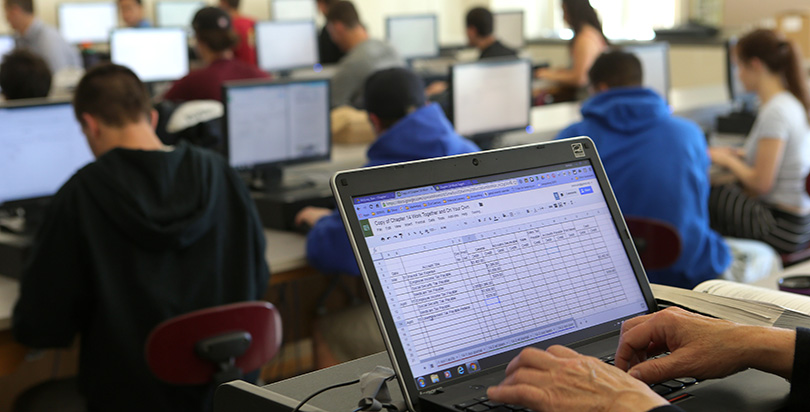Parton: 3 Ways States Are Committing to Using Data to Meet Their Education Goals for Students Under ESSA

States have made big commitments in their plans for complying with the federal Every Student Succeeds Act to use data effectively to achieve their education goals — a major recognition of data as a powerful tool when it’s working for students. The Data Quality Campaign has dug into every state’s ESSA plan and found that while approaches to student success vary, the commitment to data use is clear.
Here are three major ways that states are deploying data to meet their education goals:
1. States are supporting districts and schools to use data.
Local continuous improvement efforts can be hindered by districts’ lack of data and research capacity. Without data, local leaders are left to make decisions based on hunches or how things have been done in the past — and they won’t know whether investments they’ve made in supporting student learning are working. But in their ESSA plans, states have committed to supporting districts through data analysis, targeted training and support, and sharing of best practices:
● 49 states committed to providing training and other supports to schools and districts in data analysis and use, to inform improvement.
● 38 states committed to investing in data-based tools or developing monitoring processes that explicitly examine school data to support and continuously improve implementation.
● 15 states committed to collecting data to continuously update the evidence backing school interventions.
Georgia will use its P20 Collaboratives, existing support systems that provide professional learning opportunities to educators, to increase district capacity to use data for continuous improvement. These networks will work with the state Department of Education, colleges and universities, and other stakeholders to help local schools analyze their data and select evidence-based interventions to increase student achievement and to close equity gaps in targeted schools.
2. States are using data at the agency level to monitor and foster progress.
To best support districts in using data to improve outcomes for all students, states must also work to build their own capacity to collect and analyze data. States are seeking to break down silos within and between agencies to facilitate stronger goals and better data sharing. In their ESSA plans:
● 40 states committed to updating their long-term goals based on data.
● 36 states committed to improving data quality.
● 28 states committed to increasing the capacity of their state education agency to support accountability and school improvement.
Washington is taking a “whole agency” approach to improving state capacity to assist districts and schools. The state will improve collaboration among offices that work to support all students. For instance, the state’s Office of System and School Improvement will collaborate with the Office of Special Education on a new data review process that will produce district templates. These will help them analyze and use student data to determine the impact of administrative efforts and institutional policies. This work could, for example, help the state and its districts address potential issues of concern and need, such as disproportionality in special education identification and placement. This approach will also allow the state to continuously monitor its own ability to serve schools and foster improved outcomes for students.
3. States are increasing transparency.
State efforts to improve school quality should not happen in the dark — states can shine a light on what’s working and where more growth is needed by increasing transparency. This ensures that families and communities are part of the conversation about school improvement. States are seeking to make more information available and keep communities in the loop. In their ESSA plans:
● 32 states committed to including measures beyond what is reported in their accountability system on state report cards, to provide a more complete picture of school and student performance.
● 32 states committed to ongoing stakeholder engagement on implementation and outcomes.
Delaware will publicly report several new metrics that provide a more complete picture of school quality. New information will include discipline rates and the results of parent, teacher, and student surveys on school climate. School report cards will also include student access to school specialists, such as counselors and psychologists; equitable access to effective teachers; and postsecondary outcomes for students, such as college enrollment, military service, apprenticeships, and workforce placement.
These three themes are important, but they don’t capture all the many ways states are — or could be — making data work for students under ESSA and beyond. Teachers, families, and leaders are best able to serve students when they have quality, timely information that answers their questions and informs action. States will need to continue to focus on policies and practices that make sure those closest to students have the data they need and the time and skills to use it.
Brennan McMahon Parton is director of policy and advocacy at the Data Quality Campaign, a nonprofit policy and advocacy organization leading the effort to ensure that educators, families, and policymakers are empowered with quality information to make decisions that ensure students excel.
Get stories like these delivered straight to your inbox. Sign up for The 74 Newsletter

;)